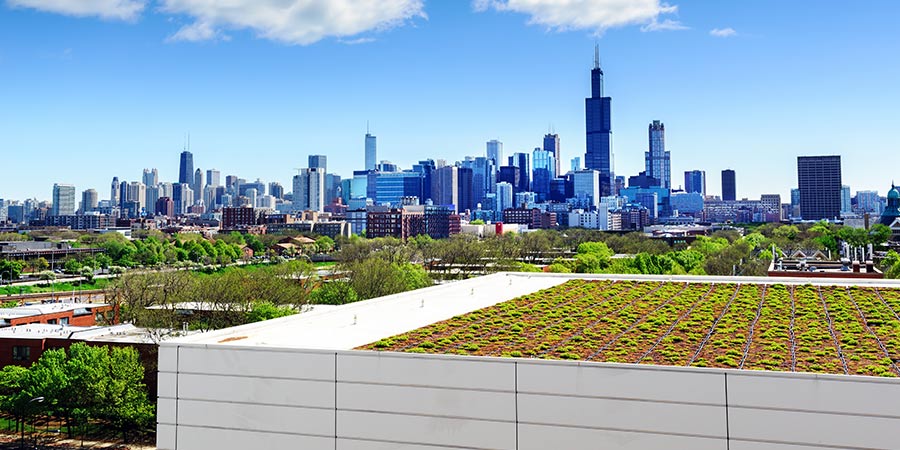Top questions to ask when designing a green roof
March 16, 2018

We all know the economic and environmental benefits of green roofs, but how do you ensure that your client’s vision of a green roof is realised? Today we had the pleasure of talking with Nick Smith of green roof system specialist Zinco International. He shared some key considerations to keep in mind when designing a green roof.
- Recognise that every project is different. “Virtually every green roof project has its own complexities, because every roof condition is different,” Smith explained. “You can’t apply the same formula to all roofs.”
- Engage experts early on. Before writing the spec, have a dialogue with a green roof consultant or manufacturer to get concrete information about installation and maintenance costs. “This information is crucial when it comes to project realisation,” Smith said. “Armed with this knowledge, you and the building owner or property manager can make the most informed decisions about the investment in a green roof.”
Learn more about liquid waterproofing solutions for green roofs
- Research green roof consultants. “The assemblies in many green roof manufacturers’ websites often don’t address the kind of engineering challenges of the vast majority of projects,” Smith said. “Talk with experienced practitioners who can not only build the assembly correctly but make sure it functions for the long term.” To that end, ask potential manufacturers about not only their years in business, but also what projects they’ve worked on that are similar in size and scope to yours. Ask to talk to references who have had their green roofs in place for several years to see how they’re performing.
Discussion points
Discuss the below questions with the building owner or property manager before you write the green roof specification. With this information in hand, you can work with your green roof consultant to come up with specifications that fully meet your client’s needs.
- What is the catalyst for choosing a green roof? Roof utilization is a big driver for many employers who are looking to create recreational space for their staff or visitors, while others are creating green roofs for sustainability reasons. It’s becoming increasingly common for building owners to plan green roofs to help them comply with emerging storm water management legislation. Some cities like Boston, Portland, and Seattle are requiring developers to mitigate their building’s impact on the region’s storm water system. If a building owner is seeking a green roof in order to comply with these environmental regulations or to earn LEED credits, they’ll usually want the least expensive green roof option, like a sedum roof, while green roofs that serve as recreational spaces are likely to be more complex.
- What is the load bearing capacity? This is a huge indicator of the feasibility of a green roof. If your roof can only carry 15 pounds per square foot, for example, a green roof may not be possible at all, whereas if the roof can carry 100 pounds per square foot, there are many green roof options available to you.
- What is your budget? Creating a roof with succulents like sedum is the simplest and least expensive to install and maintain, while more sophisticated green roofs that support courtyards and shrubs increase the associated costs.
- Do you have staff to maintain the green roof? There is no such thing as a maintenance-free green roof, so it’s important to be up front about this and to ask your green roof consultant what’s involved. If your client’s maintenance crew can only realistically access the roof a few times a year, they may want to choose lower maintenance plants whereas if they have a landscaping crew, they could opt for more visually appealing options that serve as an extension of their landscape.
Additional considerations:
- Location. The microclimates in different regions – and their associated temperature and precipitation rates - can impact which plantings are best for the green roof. Hardiness zones also determine feasibility of different plant species.
- Maturity time. The time it takes for your green roof to become established varies depending on the locale as well as the type of plants used. Sedum roofs, for example, generally require a two-year establishment period.
- Waterproofing system. The assembly of the green roof will depend on what the waterproofing system is. And the waterproofing system will have cost implications as well. Talk with your green roof consultant about what type of waterproofing system is compatible with the green roof assembly. Green roof consultants are not waterproofing experts. Similarly, waterproofing experts are not green roof experts. At the least, the waterproofing membrane should have a root barrier so that the plant growth won’t damage the waterproofing system. Also, be sure that the waterproofing product has had proven success in rooftop vegetation environments.